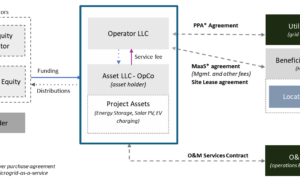Now that 2017 tax season is over, I believe we’ll be seeing the start of a long bull market. Why? Because wealthier crypto investors can now focus their energy on the crypto markets and their investments without having to deal with the burden of taxes. 2017 marked the first year that many crypto investors had to pay large tax bills. If you take a look at the price of Bitcoin, it increased from $963 at the start of 2016 to $14,100 at the start of 2017, representing a 1,464% increase. But, it only increased from $434 at the start of 2015 to $963 at the start of 2016, representing a mere 121% increase (Coin Data). This means that even if people were paying their crypto taxes prior to this year, their tax bills weren’t particularly high given the substantially smaller gains.
It’s also worth noting here that crypto investors haven’t really been bothering to pay their taxes prior to this year, regardless of how high the tax bill was. The IRS reported that less than 900 people annually reported their taxes from crypto capital gains in each of the years from 2013 – 2015, and it’s believed 2016 was similar. So not only did crypto investors encounter the stressful task of figuring out how to calculate their crypto capital gains taxes for the first time this year, but they also had to make sure they had enough money freed up to pay their tax bill.
I believe all these factors led to many of the crypto whales not trading as aggressively in the last few months as they did at the end of the 2017, which is what led to a market downturn. Now that tax period is officially behind us, crypto whales can put all their focus back into their investments, and this should cause the markets to rise. It will most likely be a gradual rise, but I wouldn’t be surprised if it’s the start of a long-term bull market in crypto.
What Should Crypto Investors do to Prepare for Filing Taxes Next Year?
If you trade regularly, be sure to download your trading history monthly from the exchanges that you most often use. Do this every month, and keep the files saved on your computer in an organized manner (i.e. AprilCoinbaseTrades.xls, AprilBittrexTrades.xls). If you’ve never done your taxes before, sign up for an account on Bitcoin.tax or Cointracking.info and upload your monthly trade reports to those sites. Not only will this save you time come tax season, it will also help you keep track of your capital gains and the amount of taxes you’re set to pay. This could affect your trading strategy at the end of the year, if you’re looking to reduce the amount of taxes you’re set to pay.
If, for example, come December you’re set to pay taxes on capital gains of $10,000, but you decide you don’t want to have pay any taxes for the year, you could choose to trade out of any losing crypto positions you have before December 31, which would reduce your outstanding capital gains. If the losing position was for an amount greater than $10,000, then ultimately you would have no capital gains for the year, and thus no taxes to pay.
It’s also important to remember the IRS has three years to audit past tax returns. So even if you don’t hear from the IRS right after a tax period you haven’t filed for, they still could come knocking years down the road. It’s always better to be safe than sorry, and file your taxes when you’re supposed to. If you keep track of your monthly trading history and follow the aforementioned steps, you’ll find that filing your crypto taxes doesn’t have to be a stressful ordeal.



































